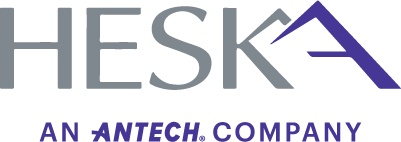Use of Technicians during a COHAT; a Clinic’s Most Powerful Asset
I started my journey into the veterinary medical world as an 8-year-old dreaming about being a veterinarian and helping animals. As I grew up and learned more about what a veterinarian did, it did not fit my vision of what I wanted to be doing all day, every day.
In my mid twenties I discovered the role of the Veterinary Technician. I started looking into everything an RVT has the potential to be used for. This was it! This was for me! I wanted to be doing direct care. Feeling connected to my patients is important to me. Spending time babying them under anesthesia, making them feel at home in hospital, ensuring comfort during radiographs or other procedures, this was the stuff that lit me up! So off to Veterinary Technology school I went, and I loved it and I still love it.
It was later in my career that I discovered how powerful the Veterinarian and Technician team truly is. You see this in many areas of practice. When the team is really ‘meshing’ it feels like a well-oiled machine. Things just happen exactly when you need them to happen. It absolutely feels like magic to me, and working like that makes me excited by the end of the day.
In this article I want to focus on the COHAT (Comprehensive Oral Health Assessment & Treatment) and the use of veterinarians and technicians during the procedure. It is an area I have seen develop so much during my time and I can really see each role’s unique power highlighted when they are used efficiently during this time.
Starting with the COHAT (but not…and then…)
My experience starting with dentistry was not actually with dentistry. Early in my career, I started doing the anesthesia for dental procedures, which I loved. I monitored and kept the patient warm, managed pain, and fluids (all the anesthesia things we know), and I was happy. Who did I watch doing the dentistry? The veterinarian. They did the whole procedure from charting to basic cleaning, subgingival curetting, extractions, and then polishing and finishing. The procedure would keep us both busy, veterinarian and technician, for around two and a half hours. I thought this was standard. It felt ineffective to me to keep a veterinarian tied up in one procedure for its entirety when a technician could have performed substantial portions of it.
I quickly learned that there was a lot of variation across the industry.
With a switch of practice, I found myself at the other end of the spectrum with my involvement in dentistry. I learned how to do everything. This was before it was determined that extractions are dental surgery and are outside of the medical scope of a technician, so I learned how to do everything inclusive of all components of extraction. During those COHATs, it was only two technicians. One doing the anesthesia and one doing the procedure. The veterinarian was in the building of course, but only popped in to let us know what teeth to extract (after radiograph evaluation) and then again at the end to do a quick double check. This was a system I enjoyed. I felt connected to my doctor and my patient. I felt a large sense of pride and responsibility. My veterinarian was able to take on tasks that kept them effective in the practice (appointments, other procedures, diagnostics, etc.).
As my career went on, things changed. It became official that dental extractions were outside of the medical scope of RVTs. They are considered surgery. That made sense to me, and I was happy with that decision, but then I found myself on the other end of the spectrum again. Veterinarians were doing most of the COHAT including parts that technicians can (and should) be doing.
So, what is an effective meet in the middle? A technician is such a powerful tool during a COHAT. Technicians learn dentistry skills extensively during schooling (dental radiography, charting, instrument identification and proper use, effective sub-gingival curetting, and polishing). Those skills should be effectively used during every dental procedure. Let us look at an ideal system!
An Ideal System for a COHAT: The Power of the Team
The system I am about to describe is my opinion and may not work for all practitioners, but in my experience, I have found it to be an extremely effective use of time and skills. It lets all parties shine!
The start of the procedure can and should be done by a technician with the veterinarian on premises, and easily accessible, but does not have to be directly involved. Once the patient is under general anesthetic and is stable, the maxillary series of dental radiographs can be completed while the patient is in sternal recumbency. When the maxillary arcade is complete, the patient can be positioned in dorsal recumbency and the mandibular series of dental radiographs can be completed. With full mouth radiographs acquired, the patient can now be placed in lateral recumbency and the technician can start the COHAT. The radiographs can be reviewed by the veterinarian and a treatment plan can be decided upon. The technician can place dental blocks and the cleaning can be continued until it is time to proceed with extractions.
The steps of the COHAT are as follows and most of them should be completed by the technician.
- Full mouth dental radiographs
- Initial dental charting (calculus index, missing teeth, fractures, oral masses)
- Chlorhexidine rinse of the mouth
- Gross removal of calculus (powered scaler first then touch up with a sickle scaler)
- Subgingival curetting (this step can be escalated with a powered scaler of appropriate type with the correct tip, but nothing will replace the Gracey curette, it must also be used)
- Extractions (potentially here or closer to the end, either is fine)
- Detection of missed calculus (periodontal explorer for detection, do not use the air syringe to dry teeth to see plague/calculus with extraction sites)
- Periodontal probing and charting, charting of periodontal index (a veterinarian may want to do this)
- Polishing
- Final chlorhexidine rinse
- Dry out mouth and wake up
As you can see, the areas where we need a veterinarian directly involved in the COHAT is for diagnostics and surgery. Everything else can and should be done by the technician. This allows the veterinarian to be involved in other procedures and appointments. This utilizes both parties to their full effectiveness, allowing the whole clinic to be maximally efficient but it does not stop there! The technician should also be heavily involved in patient discharge and after care!
After the COHAT: Client Communication
After care for dentistry may not be extensive for us but it is for clients. It can be a lot to take in; remember they must think about anesthesia after care and dental care (both immediate and long term). This is a wonderful time to leverage a technician’s impressive communication skills.
During the discharge, the day of the procedure, all I go through with the owner is anesthesia after care. I cover when, what and how much the patient can eat (canned versus soaked dry considering any dietary restrictions), what is to be expected as they recover and heal, and what signs to watch for that may indicate a problem. That is enough for day one. Often having the veterinarian briefly visit during the discharge is nice as well.
Before the owner and patient leave that day, I make sure to book a follow up appointment for about 7 to 10 days post COHAT. This appointment allows us to focus more extensively on the dentistry itself. We can go over before and after pictures, dental radiographs, and the long-term management of the periodontal disease (what they can do at home versus what needs to be done by the veterinary care team). I review tooth brushing and how to train the animal to accept and enjoy it!
I usually ensure a report is written up from the dental software. It incorporates the diagnosis and all the recommendations from the veterinarian. This report is usually very well received by owners and helps a lot with compliance overall.
As a technician, I have done this appointment many times and I always really enjoy it as do the owners. It is such a lovely conclusion to what is a big process for owners and their pets.
Conclusions
RVTs are a remarkable asset to any veterinary medical situation. They are a fountain of knowledge and skills. They should be utilized to their fullest extent in all areas of practice; dentistry is no exception.
By using an RVT throughout the process of the dentistry we can deliver a superior experience for our patients, our clients, and the other members of the medical team.
Let your RVTs shine, just like those teeth do at the end of the COHAT!

